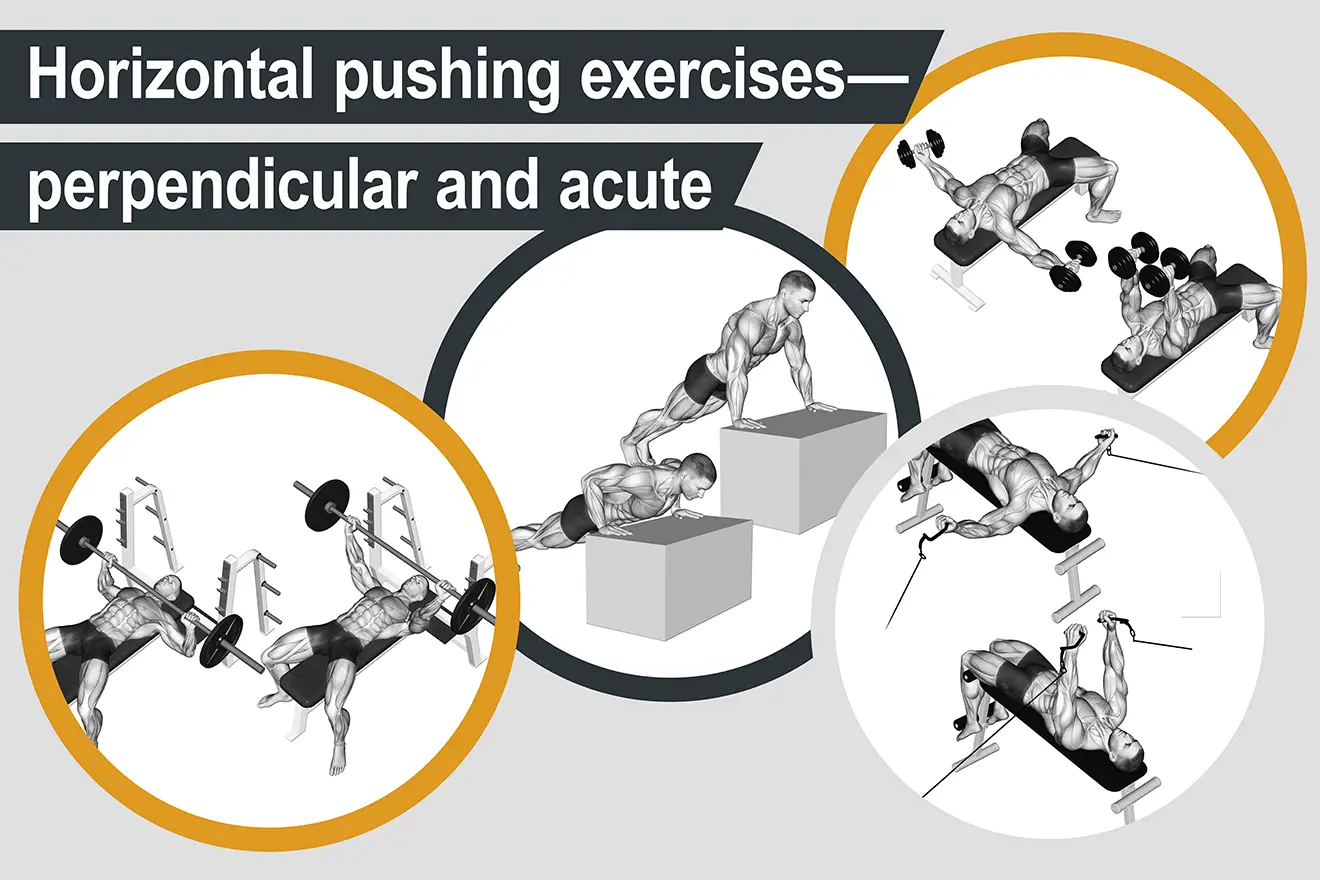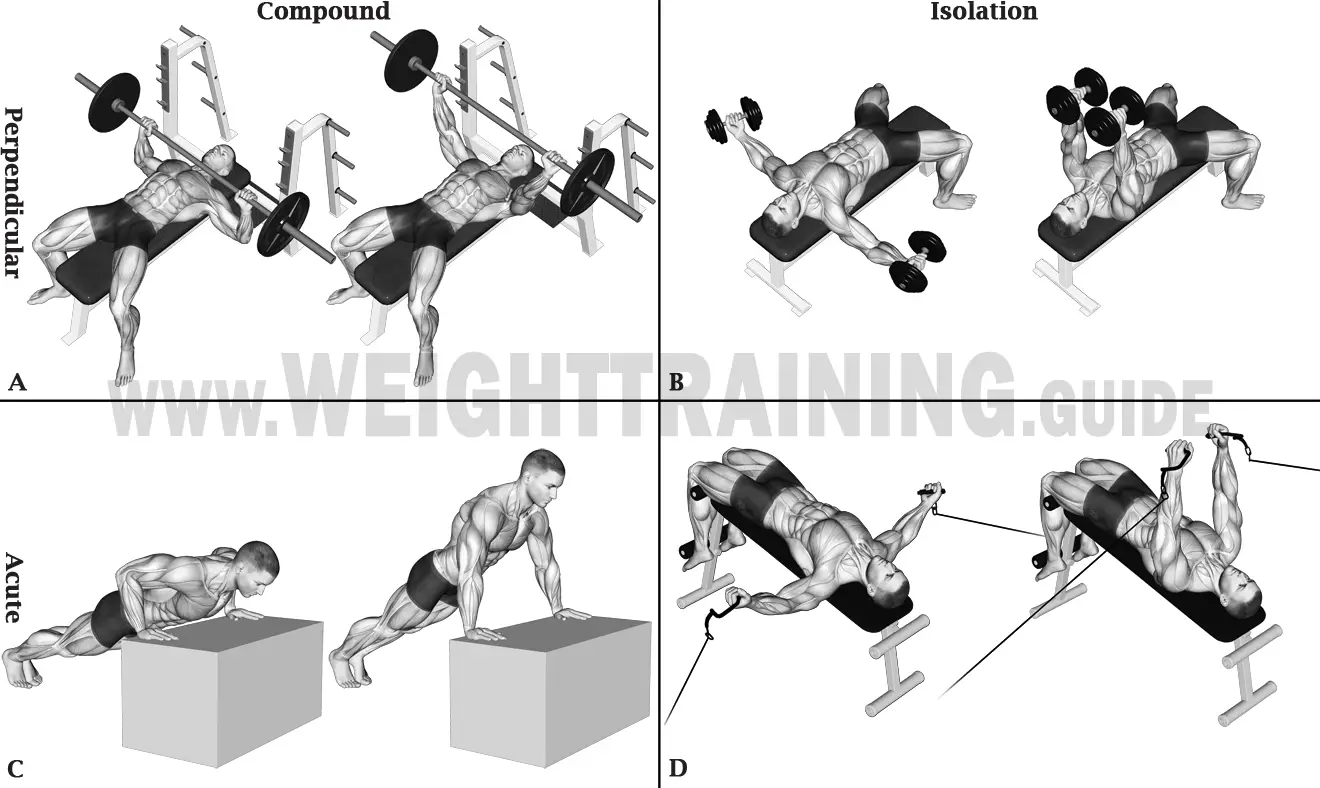Horizontal pushing exercises—perpendicular and acute
Movement patterns and classification
Horizontal pushing exercises with a perpendicular (90-degree) or acute (less-than-90-degree) angle of force relative to your torso can be either compound or isolation (Figure 1).
The compound exercises involve either pushing a weight away from your chest (for example, the barbell bench press; Figure 1, A) or pushing your chest away from a stable surface (for example, the incline push-up; Figure 1, C). The compound exercises combine horizontal shoulder flexion with elbow extension.
The isolation exercises (for example, the dumbbell fly; Figure 1, B) involve pushing a weight towards your midline while maintaining extended elbows. These exercises use only horizontal shoulder flexion.
Figure 1. Examples of compound and isolation horizontal pushing exercises with a perpendicular or acute angle of force relative to your torso. A. barbell bench press; B. dumbbell fly; C. incline push-up; D. decline cable fly.
Muscle activation
Compound and isolation horizontal pushing exercises with a perpendicular or acute angle of force relative to your torso activate your lower pectoralis major, upper pectoralis major, anterior deltoid, and the short head of your biceps brachii (Figure 2). The compound exercises also activate your triceps brachii.
The target muscle in isolation exercises is your lower pectoralis major. The target muscle in compound exercises can be either your lower pectoralis major or triceps brachii depending on the width of your grip. If you use a grip that is wider than shoulder width, your lower pectoralis major will be the target, whereas if you use a grip that is shoulder width or narrower, your triceps brachii will be the target.
Figure 2. Main muscles activated by compound and isolation horizontal pushing exercises with a perpendicular or acute angle of force relative to your torso. *The target muscle in isolation exercises and in compound exercises in which you use a grip that is wider than shoulder width. †Activated only in compound exercises and becomes the target muscle instead of the lower pectoralis major if you use a grip that is shoulder width or narrower.
See also Horizontal pushing exercises—obtuse.









